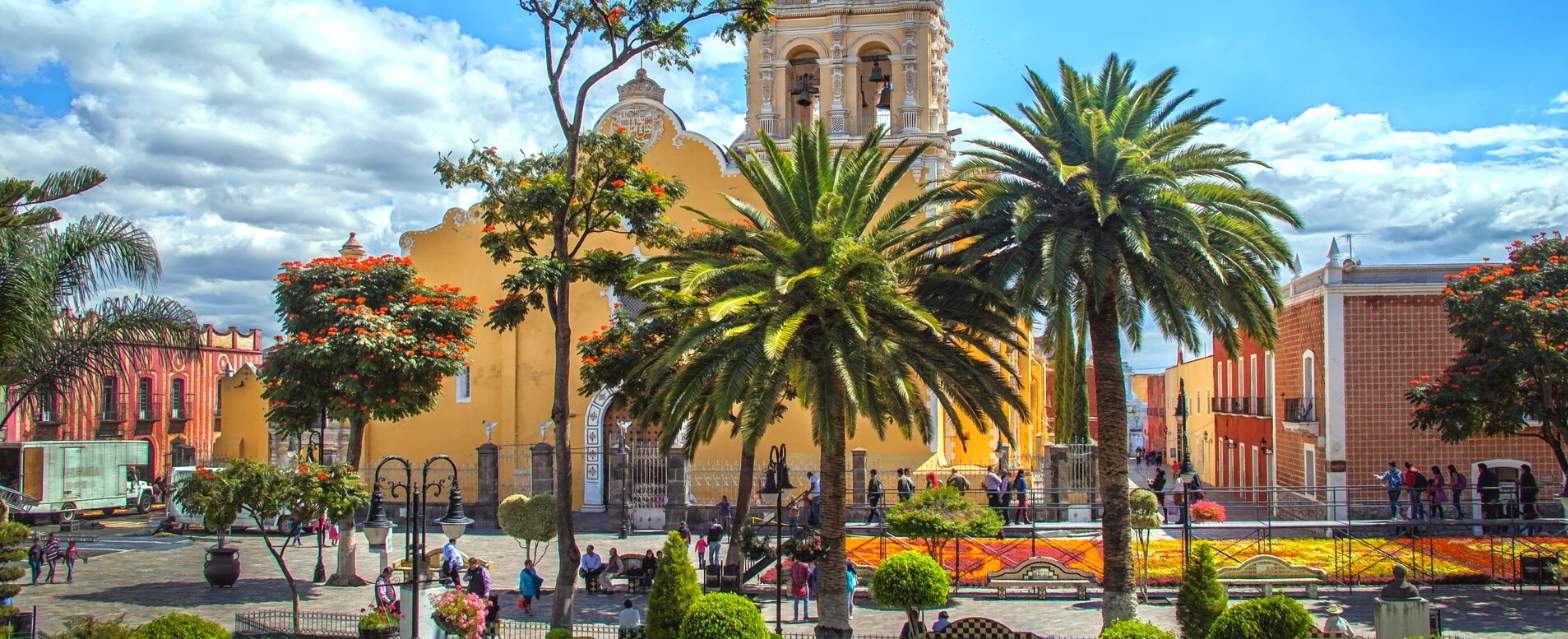Puerto Vallarta (or PV as often abbreviated) is one of Mexico’s most well-known vacation spots. Puerto Vallarta has some dramatic landscapes on the Bay of Banderas with the lush Sierra Madre mountains behind it.
With a population of almost 556,000 this is a beach resort city. Although, you can still find some “pueblo” (small town) charm within the city if you desire.
From fine dining to all-inclusive resorts to charming neighborhoods, travelers worldwide are attracted to this city. With ample activity options, you could quickly be drawn to a honeymoon, group vacation, or solo adventure here.
And, who knows? You may even be tempted to move here.
Where is Puerto Vallarta located?

Puerto Vallarta is the second largest city in the state of Jalisco. It’s located on the Bay of Banderas, spanning the two states of Jalisco and Nayarit.
The beaches that line this coast are truly breathtaking. Those staying in Puerto Vallarta can enjoy the city beaches or wander the coast to explore hidden spots. The nature options here are endless.
Flying to and From PV
Part of what has made Puerto Vallarta so appealing for many years is the ease with which international travelers can arrive. Puerto Vallarta has its own international airport: Licenciado Gustavo Diaz Ordaz International Airport (PVR).
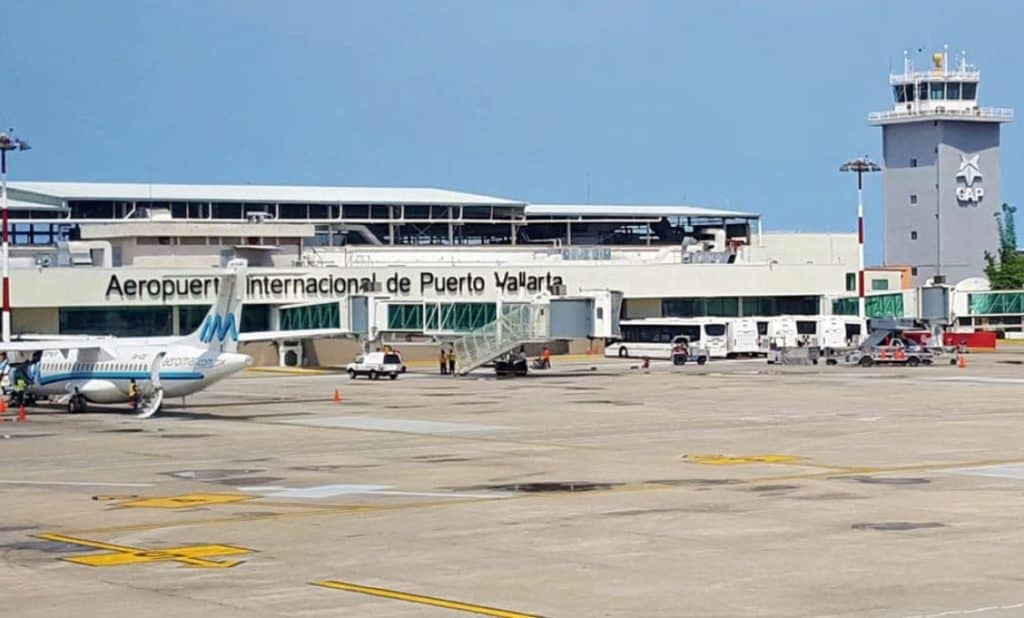
The Gustavo Diaz airport is the third largest in Mexico, which makes it one of the easiest places to visit when coming to Mexico. Ten airlines have direct flights from the US and five from Canada. It’s also easy to continue your journey to other parts of Mexico with flights from four national airlines.
What’s The Weather Like?
The weather in Puerto Vallarta is quite pleasant but does vary slightly depending on the time of year that you plan to visit.
The best weather falls during December-March, making it an ideal place for snowbirds traveling south to avoid their winters and enjoy warmer temperatures. During these months, temperatures range from low 60s-80s Fahrenheit.
These temperatures are ideal for being out and about during the day and enjoying a cooler evening.
During April and May, the temperatures rise slightly, averaging mid-80s. However, once rainy seasons hit, temperatures reach their highs, and the weather becomes very humid. During these months (June-September), temperatures are in the 90s. However, because it is a “rainy season,” the actual precipitation is quite mild, usually only raining in the evenings.
Best Time To Visit Puerto Vallarta?
Logically, the most popular time to visit Puerto Vallarta is during the “best weather” months. However, hotel and rental prices are quite high during this time as they are in high demand. December- March are also the best months to do some whale watching.
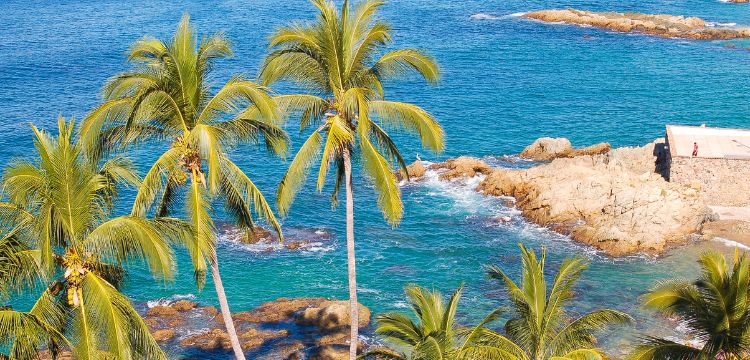
If you want to pay lower prices and experience Puerto Vallarta with fewer tourists, plan your visit for other times of the year.
Another notable time of the year when Puerto Vallarta sees a spike in tourists is during Semana Santa (Easter in Mexico) and summer vacation (the two final weeks in July). So, expect a lot of people if you visit during those times as well.
Things To Do in Puerto Vallarta
As the second largest city in Jalisco, and a major beach resort town, there are plenty of things to see and do in Puerto Vallarta.
Whether wandering the Zona Romantica or spending a day on the beach, these are some of the best things to do:
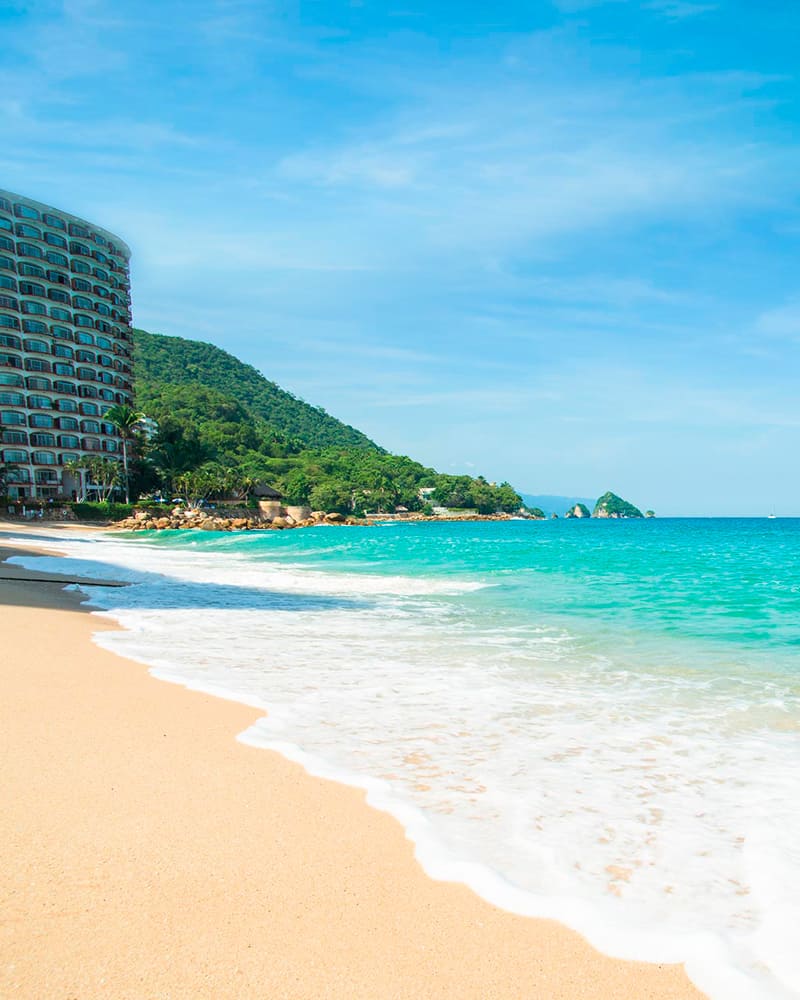
- Go to the beach. One of the biggest attractions of Puerto Vallarta is the beach’s proximity to all the city’s conveniences. Probably the most popular and iconic beach is Playa Los Muertos. There’s also Las Gemelas beach- which is laid-back and quiet.
- Walk the Malecon, aka El Malecon, is the boardwalk of Puerto Vallarta. It is about a mile long, and restaurants and stores line one side, with the bay lines the other. While you can walk it at any time of the day, it makes for a great sunset or evening stroll before grabbing a bite to eat, heading to the bar, or enjoying a night at home. You can also see the emblematic Church of Our Lady Guadalupe while walking el Malecon. With its beautiful architecture, it’s worth a stop.
- Dine out. One of the benefits of being such a popular city is that visitors and residents can enjoy all types of dining experiences. You can find any cuisine you desire, from local taco stands to fine dining. Some of the most popular places to eat out are in La Zona Romantica and El Centro, but there are great options all over the city.
- Enjoy the nightlife. Puerto Vallarta has quite a lively nightlife scene. There is truly something for everyone, from hip bars to laid-back dives to wild spring break spots. And, since it may be a vacation, the party can start early in the afternoon with plenty of drink options on the beach. Puerto Vallarta will provide plenty of options if you’re looking for a party.
- Stroll La Zona Romantica. Also known as Old Vallarta, this part of the city feels more like a quaint town. While Puerto Vallarta is known to be a resort city, this area is ideal for those looking for something different. And even though it has a less luxurious vibe, you will find some of the best restaurants in this area as it’s still quite a trendy neighborhood.
- Los Arcos Amphitheater is another important stop on El Malecon. It’s a huge theater with live music, dance, and performance events most nights. So, if you’re at a loss for what to do, head here, and you’re likely to find the answer.
- Take a day trip. While there’s plenty to keep you entertained within the city, there are also many bucolic day trip options within a short trip from Puerto Vallarta. You could head to Yelapa, one of the most iconic beaches in the area. It’s only reachable by boat, but you can easily grab one from a couple of locations, including Playa Los Muertos. Or, if you want to stay on land, head down the coast to the neighboring coastal towns of Bucerias, Sayulita, or Punta Mita. All three have very different vibes, so you’re sure to find one that is your perfect match.
Best Neighborhoods in Puerto Vallarta
Whether you’re deciding where to stay for your vacation or where you want to live in Puerto Vallarta, understanding the different neighborhoods in the city is important to find the best rentals in Puerto Vallarta.
Here are some of the highlights of the most popular neighborhoods in the city:
- Zona Romantica. You may recall this area of town as being slightly more laid back when compared to the “resort” areas of town. With its trendy vibe, many restaurants, and happening nightlife, the Zona Romantica, also known as Old Vallarta, is one of the most sought-after areas to live in. It’s also one of the most gay-friendly neighborhoods in all of Puerto Vallarta- hosting weekly events, with pride flags painted throughout the area and a few gay bars.
- El Centro. This area of town is home to part of the Malecon, where the Our Lady of Guadalupe church is located. There are many restaurants, bars, and clubs in this area. For all these reasons, it’s a popular hub for tourists. So, if you’re looking for something quieter or more “local,” then El Centro probably isn’t it.
- Marina Vallarta. Probably one of the fanciest ports you can imagine, this is where the big cruise ships come to dock. This is not a budget-friendly option. However, this could be your option if you’re looking for a luxurious condo within walking distance of the beach. It’s also a popular neighborhood for retirees in Puerto Vallarta.
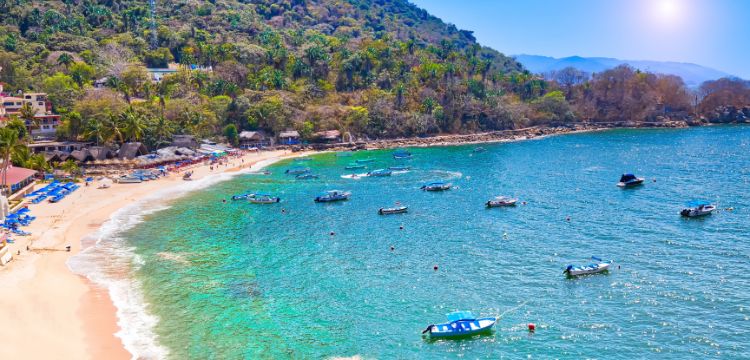
- 5 de Diciembre. This is a great area for those looking to be close to the hustle and bustle of El Centro but not quite in it. This area is located right next to El Centro and the Zona Hotelera. You’ll find many conveniences and different food options such as restaurants, grocery stores, and taco stands.
- Zona Hotelera. The “Hotel Zone” may give away the vibe of this area. If you want to be immersed in Mexican culture, this probably isn’t the place for you. You’ll find fancy galleries, malls, and chain restaurants from the US. Oh, yeah, you’ll also find plenty of hotels and resorts.
- Fluvial Vallarta. This area is gaining popularity among tourists and foreigners looking to live in Mexico. It’s in the northern part of the city and is more residential. Fluvial Vallarta is rapidly expanding but seems to be accommodating those who want the convenience of home, with the construction of Starbucks, Costco, and other US chain restaurants.
- Nuevo Vallarta. Not quite as fancy as Marina Vallarta but catering to higher-end visitors or residents, Nuevo Vallarta is another up-and-coming neighborhood. It’s located close to two marinas. It is also home to two golf courses. It gives off a resort vibe and is completely different from the “old world” architecture in other Puerto Vallarta areas (think Zona Romantica, El Centro, and 5 de Diciembre).

There are plenty of options for accommodations in Puerto Vallarta, with each neighborhood providing a distinct environment. If you’re looking for a long-term rental in Puerto Vallarta, visit all the neighborhoods and see what resonates best with you.
Cost of Living in Puerto Vallarta
The cost of Living in Puerto Vallarta will depend on a few things.
- Whether it is high or low season
- The location of the rental
- Size of the home
- Amenities included
- Furnished vs unfurnished
- The finishes of the home
I recommend that anyone moving to Mexico rent a short-term place on a platform like Airbnb or similar while you get to know the area. That way, you can be boots on the ground and look for places in person.
Having said that, it is also important to know that rentals aren’t regulated in Mexico in terms of pricing. So, a landlord can charge whatever they want. That’s why you see such a drastic range in rentals.
A 2-bedroom apartment in a popular neighborhood can be rented for $14,000-20,000 pesos and even up to $50,000 pesos for a similar place. Why? Because people will pay for it. However, it’s not unusual to see rentals start as low as $12,000 pesos not too far from the Malecon or the beach. Keep your eyes peeled for signs in Spanish that say “se renta,” and have someone help you translate when you call the number. That’s how you find the best rentals in Mexico.
With all that said, a couple can live comfortably in Puerto Vallarta on a budget of $2500-3500 USD a month. Assuming your rental isn’t very expensive. We know some couples living on $2,500 USD a month, and we also know a family of 4 living on $2,500 a Month. So you see, it all depends on your individual lifestyle. But this is all to say that it is very possible to live comfortably with $2500-$3000 a month in Puerto Vallarta.
Realistic Budget for a Single 65-Year Old Woman in Puerto Vallarta
Here is one of our subscribers’ monthly costs for living in Puerto Vallarta. She is a 65-year-old single female.
- $16,500 MX rent per month for a 1BR 2nd floor, air-conditioned in 5 de Diciembre with a rooftop patio & 1block from the beach- around $970 USD monthly
- All utilities are included except for electricity- including internet and Netflix.
- $900 MXN in electricity
- $1,600 MXN a month for weekly housecleaning- including laundry and some cooking
- $7,000 MXN a month for groceries – $100 USD a week
- $7,000 MXN a month on eating out and entertainment $100 USD a week
Total Monthly Budget- $32,140 MXN a month/ approx $1,890 USD a month
Keep in mind this doesn’t include the cost of healthcare insurance or medical services. Our customer doesn’t have health insurance and pays out of pocket for all of her medical treatments.
Do I Need to Speak Spanish?
As a popular international tourist destination, Puerto Vallarta is probably one of Mexico’s most “English-speaking” cities.
That means that, yes, you can get by without speaking Spanish.
However, your experience visiting or living in Mexico will be completely different if you try to learn Spanish. It will open many doors. Speaking the language allows you to better connect to the local culture and people.
If you need medical or legal services while in Puerto Vallarta, you can easily find help in English- which can be extremely important. But ultimately, Spanish is the local language and will be very helpful when navigating Mexican bureaucracy.
And because there are a lot of expats Living in Puerto Vallarta, you’re sure to find other people who can connect with your experience in navigating a new country, language, and culture. But don’t forget to branch out, too. While it’s nice to have the comfort of home in a foreign land, remember that Mexico is a vibrant country with a rich culture. Try to integrate into Mexican culture.
Getting Around
There are plenty of ways to explore the different parts of the city. Whether looking for the best budget or the most convenient, you certainly have transportation options.
Best ways to explore Puerto Vallarta:
- Take the bus. Public transportation, unsurprisingly, will be the cheapest way to get around the city, although certainly not the most convenient if you’re short on time.
- Walking. Generally speaking, Puerto Vallarta is a walkable city. Many neighborhoods are best enjoyed by exploring on foot. So, wander those cobblestone streets and leisurely take in the architecture.
- Hail a taxi. Taxis are easy to find on the streets of Puerto Vallarta, and fares are usually quite affordable. You can also use Uber in Puerto Vallarta. However, finding a taxi is normally just as convenient.
- Rent a car. The priciest option for getting around the city is renting a car. It can also be somewhat of a hassle when navigating a new city. Consider using the other options. Renting a car could make sense if you visit some of the neighboring towns or explore beyond Jalisco.
Are You Ready To Visit Puerto Vallarta?
If you’re being called to the beauty of Puerto Vallarta, then you’ll be in good company.
Many people fall in love with this magical city. With secluded beaches just a short drive away and all the conveniences of a city, it’s no wonder that many foreigners have decided to make it home.
If you decide to move to Mexico, it’s important to visit the city you plan to move to because visiting Puerto Vallarta is not the same as living there. For this reason, we offer private Puerto Vallarta Relocation Tours.





